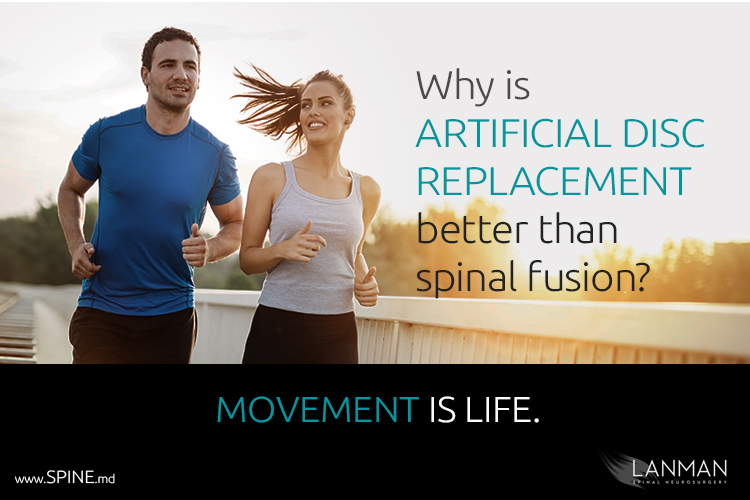Only artificial disc replacement offers the promise of preservation of the natural range of motion of the spine. Fusion, by its very nature, cannot do this. Artificial discs replace damaged discs, thus allowing the vertebrae to function as close to normal as possible. Fusion requires that at least two vertebrae bones are fused together – permanently. The pain is gone (or reduced), but the cost is a noticeable reduction in the natural flexibility of the spine.
When patients complain of unremitting pain in their neck and lower back, they want solid solutions that have a long track record of success. At first glance, fusion appears to be a perfect fit. It was first developed near the turn of the 20th Century to treat tuberculosis patients who exhibited curvature of the spine (scoliosis). By 1941, spinal fusion was a common surgery for patients who suffered from degenerative disc disease, isthmic spondylolisthesis, degenerative spondylolisthesis, and other disorders of the spine.
However, spinal fusion is not a magic bullet. The biggest problem I have with the procedure isn’t the fact that it is 19th Century medical technology; the entire medical field is built upon discoveries that are much older than that. My concern is that far too many physicians still depend on this 100-year-old procedure as their go-to solution for back pain.
I have this discussion with many of my patients at my practice in Beverly Hills, CA and patients I receive from the Cedar-Sinai Medical Center in Los Angeles. I tell them that when it comes to their treatment plan, we can always do better.
Earlier this year, my colleagues and I compiled clinical trial data following a seven-year follow-up for patients who had cervical (neck) surgeries for degenerative disc disease. As part of the study, we compared outcomes for patients who had spinal fusion against those who had artificial disc replacement surgery.
We discovered that indeed, disc replacement surgery produces better long-term patient outcomes over spinal fusion in all measurable areas, including fewer revision surgeries, lessened pain, and neurological impact (numbness, tingling in extremities).
The Spine is an incredible System
Picture how you use your spine. As a surgeon and clinical researcher, I measure spine movement in terms of the range of anterior flexion, lateral flexion, and extension. What these terms mean is that when you reach for something in the refrigerator, your spine turns, bends, twists, curves, and twists some more.
The incredible range of flexibility of such a complex assembly is entirely dependent upon the unitization of the bones within the system. Each vertebrae bone is an independent unit, but it is interlocked together with the bone before and after it, thus forming “levels” of potential motion. The discs between the bones act as cushions. Aided by tendons, cartilage, and muscle, they also hold the bones together so that they function as a complete system. They also ensure that we never go too far and damage the spinal cord and extending nerves.
Picture what happens when we fuse together just one of those levels. The spine continues to turn, bend and twist, but now the levels above and below the fused level must flex more than they have before; perhaps more than the system is built to handle. Eventually, the added stress on the discs will take their toll and additional surgery is needed.
Some of my patients have undergone two and three levels of fusion and find themselves desperate to prevent more. When some patients meet me for the first time, they don’t see an end to the fusions. And they are right. If all you’re talking about is fusion, then there really is no end. You cannot disrupt a complex system like the human spine without consequences.
Movement is Life
In my opinion, spinal fusion has served its purpose. As the only viable surgical solution for 100 years, it has served us well. But this is the 21st Century, and medical research has given us a new tool helping us recover from back and neck pain. Artificial disc replacement is not experimental. Multiple clinical studies have demonstrated that we get better long-term results with disc replacement because we preserve the natural design and function of the spine itself.
After all – movement IS life.
###






